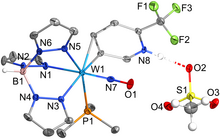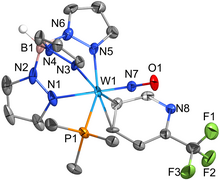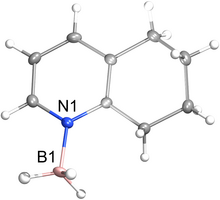Publications
2023
Proteomic methods for RNA interactome capture (RIC) rely principally on crosslinking native or labeled cellular RNA to enrich and investigate RNA binding protein (RBP) composition and function in cells. The ability to measure RBP activity at individual binding sites by RIC, however, has been more challenging due to the heterogenous nature of peptide adducts derived from the RNA-protein crosslinked site. Here, we present an orthogonal strategy that utilizes clickable electrophilic purines to directly quantify protein-RNA interactions on proteins through photoaffinity competition with 4-thiouridine (4SU)-labeled RNA in cells. Our photo-activatable-competition and chemoproteomic enrichment (PACCE) method facilitated detection of >5500
cysteine sites across ~3000 proteins displaying RNA-sensitive alterations in probe binding. Importantly, PACCE enabled functional profiling of canonical RNA-binding domains as well as discovery of moonlighting RNA binding activity in the human proteome. Collectively, we present a chemoproteomic platform for global quantification of protein-RNA binding activity in living
cells.
While ferroelectric HfO2 shows promise for use in memory technologies, limited endurance is one factor that challenges its widespread application. In this study, endurance is investigated through field cycling W/Hf0.5Zr0.5O2/W capacitors above the coercive field while manipulating the time-under-field using bipolar pulses of varying pulse duration or duty cycle. Both remanent polarization and leakage current increased with increasing pulse duration. Additionally, an order of magnitude decrease in the pulse duration from 20 to 2 μs resulted in an increase in endurance lifetime of nearly two orders of magnitude from 3×106 to 2×108 cycles. These behaviors are attributed to increasing time-under–field allowing for charged oxygen vacancy migration, initially unpinning domains, or driving phase transformations before segregating to grain boundaries and electrode interfaces. This oxygen vacancy migration causes increasing polarization before creating conducting percolation paths that result in degradation and premature device failure. This process is suppressed for 2 µs pulse duration field cycling where minimal wake-up and lower leakage before device failure is observed, suggesting that very short pulses can be used to significantly increase device endurance. These results provide insight into the impact of pulse duration on device performance and highlight consideration of use conditions when endurance testing.
Selective and site-specific boron-doping of polycyclic aromatic hydrocarbon frameworks often give rise to redox and/or photophysical properties that are not easily accessible with the analogous all-carbon systems. Herein, we report ligand-mediated control of boraphenanthrene closed- and open-shell electronic states, which has led to the first structurally characterized examples of neutral bis(9-boraphenanthrene) (2–3) and its corresponding biradical (4). Notably, compounds 2 and 3 show intramolecular charge transfer absorption from the 9-boraphenanthrene units to p-quinodimethane, exhibiting dual (red-shifted) emission in solution due to excited state conjugation enhancement (ESCE). Moreover, while boron-centered monoradicals are ubiquitous, biradical 4 represents a rare type of open-shell singlet compound with 95% biradical character, among the highest of any reported boron-based polycyclic species with two radical sites.
Silicatein is an enzyme that mineralizes environmental precursors to patterned nanomaterials and is found naturally orchestrating the complex and beautiful exoskeletons of marine sponges. To harness this activity for nanomaterial biomanufacturing, enzyme solubility and stability have been widely studied. We address the enzyme's solubility challenge via protein fusion tags: enhanced green fluorescent protein (eGFP), monomeric superfolder GFP (msGFP2), and trigger factor (TF). All three silicatein fusion proteins form oligomers to varying degrees, that are partially modulated by disulfide bridges. Biomineralization activity was assessed with silica and nanoceria, showing comparable yields for eGFP-silicatein and TF-silicatein, as well as identical composition of mineralized products regardless of disulfide bridge reduction, shown via XRD characterization of silicatein's nanocrystalline product. This implies that solubility has only minor effects on silicatein activity and that continued improvement in this area is currently inessential. Furthermore, these results suggest that silicatein biomineralization activity is inherent to the enzyme itself. Thus, future studies should be aimed at understanding silicatein's kinetic mechanisms.
Stereocomplexation, or specific interactions among complementary stereoregular macromolecules, is burgeoning as an increasingly impactful design tool, exerting exquisite control of material structure and properties. Since stereocomplexation of polymers produces remarkable transformations in mechanics, morphology, and degradation, we sought to leverage stereocomplexation to tune these properties in peptide-based biomaterials. We found that blending the pentapeptides l- and d-KYFIL triggers dual mechanical and morphological transformations from stiff fibrous hydrogels into less stiff networks of plates, starkly contrasting prior reports that blending l- and d-peptides produces stiffer fibrous hydrogels than the individual constituents. The morphological transformation of KYFIL in phosphate-buffered saline from fibers that entangle into hydrogels to plates that cannot entangle explains the accompanying mechanical transformation. Moreover, the blends shield l-KYFIL from proteolytic degradation, producing materials with comparable proteolytic stability to d-KYFIL but with distinct 2D plate morphologies that in biomaterials may promote unique therapeutic release profiles and cell behavior. To confirm that these morphological, mechanical, and stability changes arise from differences in molecular packing as in polymer stereocomplexation, we acquired X-ray diffraction patterns, which showed l- and d-KYFIL to be amorphous and their blends to be crystalline. Stereocomplexation is particularly apparent in pure water, where l- and d-KYFIL are soluble random coils, and their blends form β-sheets and gel within minutes. Our results highlight the role of molecular details, such as peptide sequence, in determining the material properties resulting from stereocomplexation. Looking forward, the ability of stereocomplexation to orchestrate supramolecular assembly and tune application-critical properties champions stereochemistry as a compelling design consideration.
A series of BN-incorporated borafluorenate heterocycles, bis(borafluorene-phosphinimine)s (11–15), have been formed via intramolecular Staudinger-type reactions. The reactions were promoted by light or heat using monodentate phosphine-stabilized 9-azido-9-borafluorenes (R3P-BF-N3; 6–10) and involve the release of dinitrogen (N2), migration of phosphine from boron to nitrogen, and oxidation of the phosphorus center (PIII to PV). Density functional theory (DFT) calculations provide mechanistic insight into the formation of these compounds. Compounds 11–15 are blue emissive in the solution and solid states with absolute quantum yields (ΦF) ranging from 12 to 68%.


